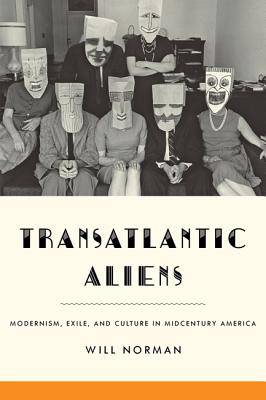
- Retrait gratuit dans votre magasin Club
- 7.000.000 titres dans notre catalogue
- Payer en toute sécurité
- Toujours un magasin près de chez vous
- Retrait gratuit dans votre magasin Club
- 7.000.0000 titres dans notre catalogue
- Payer en toute sécurité
- Toujours un magasin près de chez vous
Description
How did the experience of transatlantic displacement shape literature, art, and thought in midcentury America?
The intellectual migration to the United States of European writers, intellectuals, and artists in the 1930s and 1940s has often been narrowly seen as a clash between a rarefied European modernist sensibility and a debased American mass culture. In Transatlantic Aliens, Will Norman reorients our understanding of midcentury American culture by thinking dialectically about the interfusion of aesthetic and intellectual practices across both the cultural hierarchy and the Atlantic. The transatlantic exchanges of midcentury emerge in the book as a crisis point for modernism at which claims for the autonomy of high culture became increasingly untenable, the geographical center of cultural authority was displaced, and the governing principles of the American cultural field went through a phase of dramatic instability.
Norman relays this critical narrative through a series of interlinked case studies of key figures, including C. L. R. James, Theodor Adorno, George Grosz, Raymond Chandler, Simone de Beauvoir, Vladimir Nabokov, and Saul Steinberg. He discovers the strange afterlives of European modernism in disorientating and uncanny juxtapositions: the aesthetics of French symbolism flicker among the neon signs of a small town in the dead of night, and echoes of Mondrian's grids are observed in the form of a boardroom sales chart. At the heart of Transatlantic Aliens is a conception of alienation that encompasses both its political and aesthetic valences. What unites the exilic figures it addresses is the desire to transform the practical experience of alienation into a positive resource for criticizing and coping with a reconfigured postwar landscape.
Addressed to scholars and readers of American and comparative literatures as well as of cultural history and visual culture, the book combines assessments of individual artworks, novels, and other texts with more distant readings spanning time and space. A gallery of color plates beautifully illuminates the book's analysis. Examining hardboiled fiction through Flaubert, New Yorker cartoons through modernist painting, and Bette Davis through Hegel and Marx, Transatlantic Aliens challenges and changes the way we understand modernism's place in midcentury American culture.
Spécifications
Parties prenantes
- Auteur(s) :
- Editeur:
Contenu
- Nombre de pages :
- 288
- Langue:
- Anglais
- Collection :
Caractéristiques
- EAN:
- 9781421420943
- Date de parution :
- 15-11-16
- Format:
- Livre relié
- Format numérique:
- Genaaid
- Dimensions :
- 160 mm x 231 mm
- Poids :
- 498 g

Les avis
Nous publions uniquement les avis qui respectent les conditions requises. Consultez nos conditions pour les avis.






